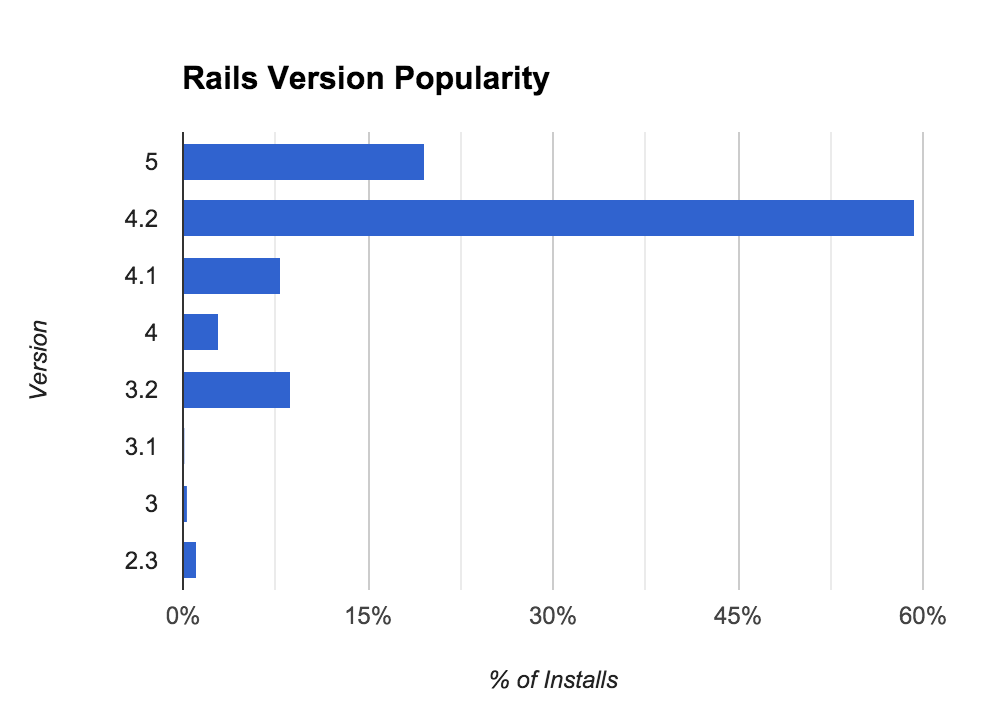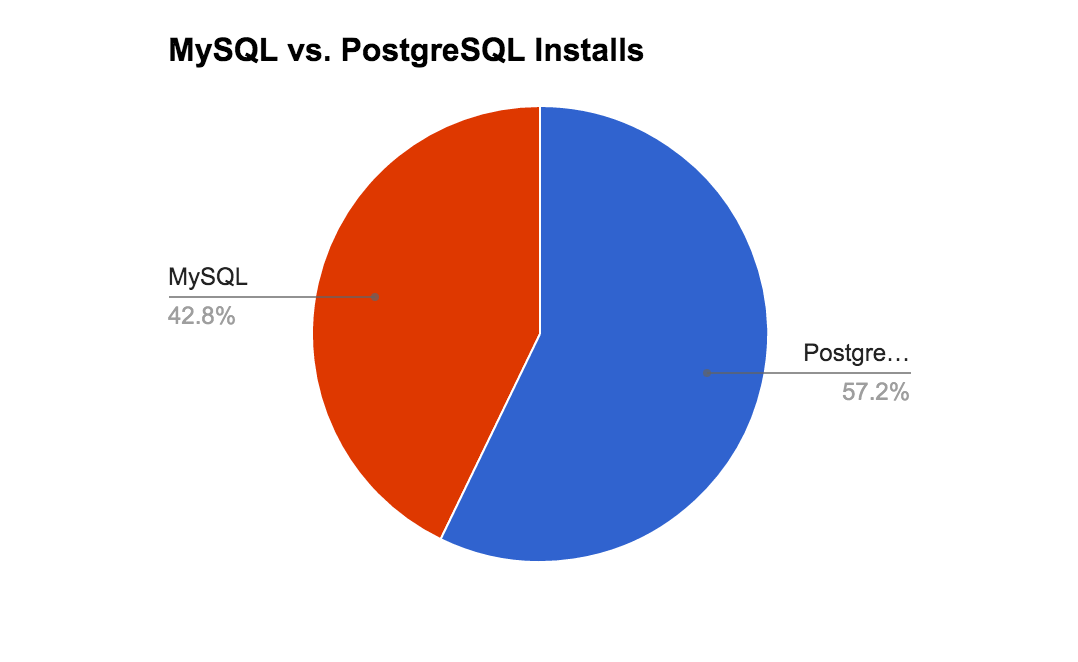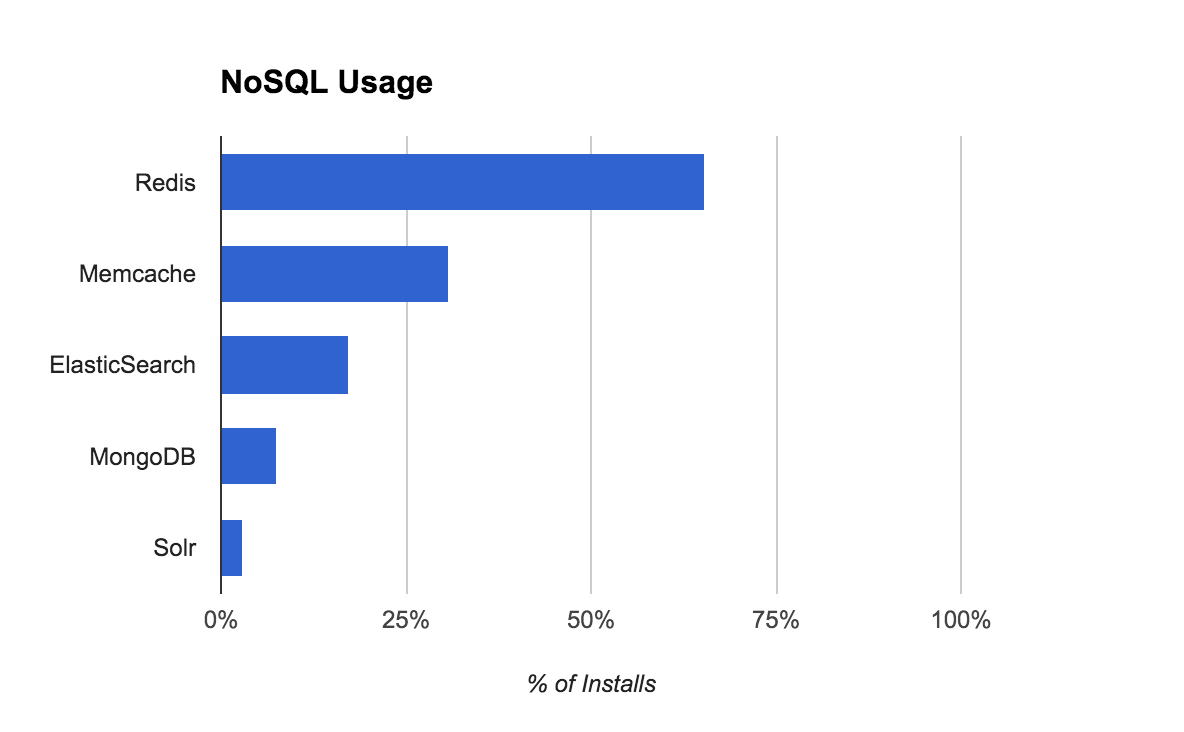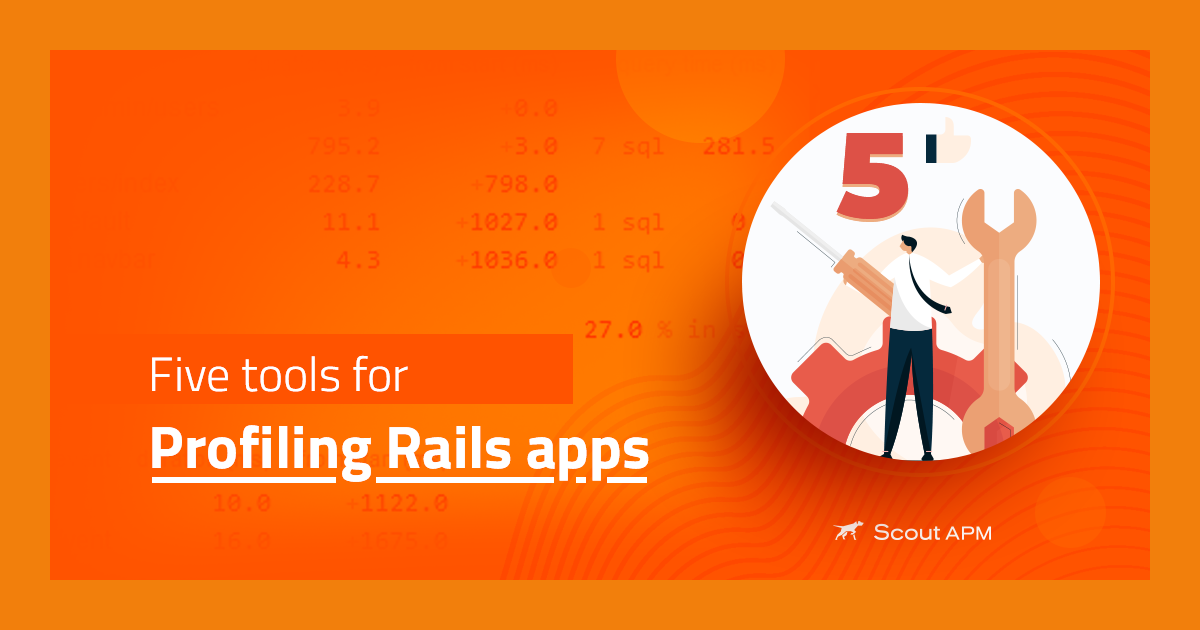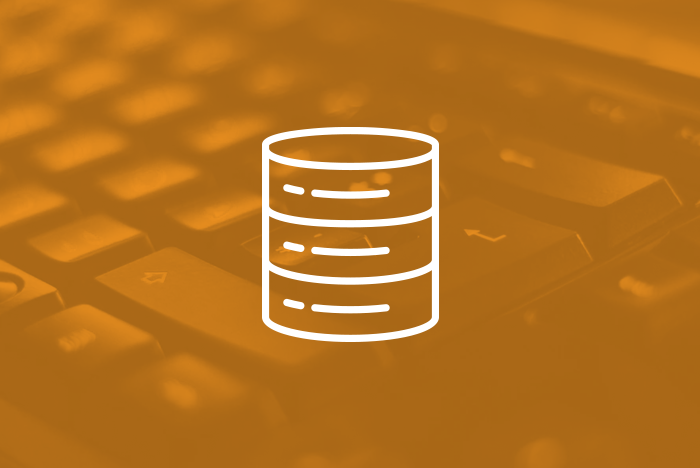State of the 2017 Rails Stack
Are folks upgrading to Rails 5? Where is the Postgres vs. MySQL battle heading? Are devs embracing Puma and concurrency?
If you're curious about the above, you've come to the right place. We collect gems used on the apps we monitor at Scout to assist with debugging issues and to prioritize libraries we want to instrument. This data set, which is across thousands of apps, should be enough to grab general usage trends.
Without delay, lets dig in.
Rails Versions
Rails 5 (20% of app monitored by Scout) enjoys solid adoption from its June 30th, 2016 release date. In last year's results, Rails 3.2 was the 2nd most popular version. Rails 3.2 dropped to 9% share in 2016.
Ruby Versions
Ruby 2.4 was released about two weeks prior to these results, so the low usage number (0.4%) is expected. Ruby versions have a nice stair-step pattern: there isn't much upgrade fear. Cheers to our Ruby maintainers!
Rails + Ruby Combinations
Ruby 2.3 adoption was strong: it holds two of the top three spots.
Relational Databases
PosgreSQL extended its lead in 2016, jumping from 52% to 57% of installs. What used to be a tossup is leaning more to a clear winner.
NoSQL
Redis usage inched up a bit in 2016: from 60% to 65%. Memcache was the biggest gainer: 31% of apps monitored by Scout are using Memcache vs. less than 10% in 2015.
Background Job Libraries
To no suprise, the Rails community continues to rally around Sidekiq. Its share of apps monitored by Scout grew to 61% from 53% in 2015.
App Servers
Puma is the choice for two out of three devs on Scout.
Last year's results
You can view the results of last year's Rails stack analysis as well.
Also See
- Which Ruby app server is right for you?
- Which Ruby background job framework is right for you?
- Rails Performance and the root of all evil
- Scout's Ruby application monitoring agent
Subscribe for more
Want more Rails insights like this delivered monthly to your inbox? Just put your email into the sidebar form.
